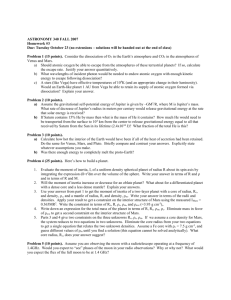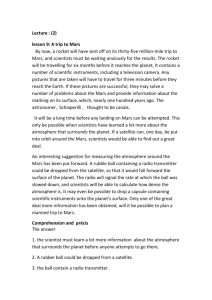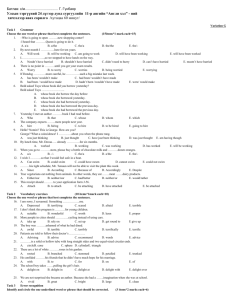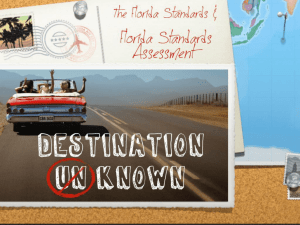Activity 6.5.3 Spherical Applications
advertisement
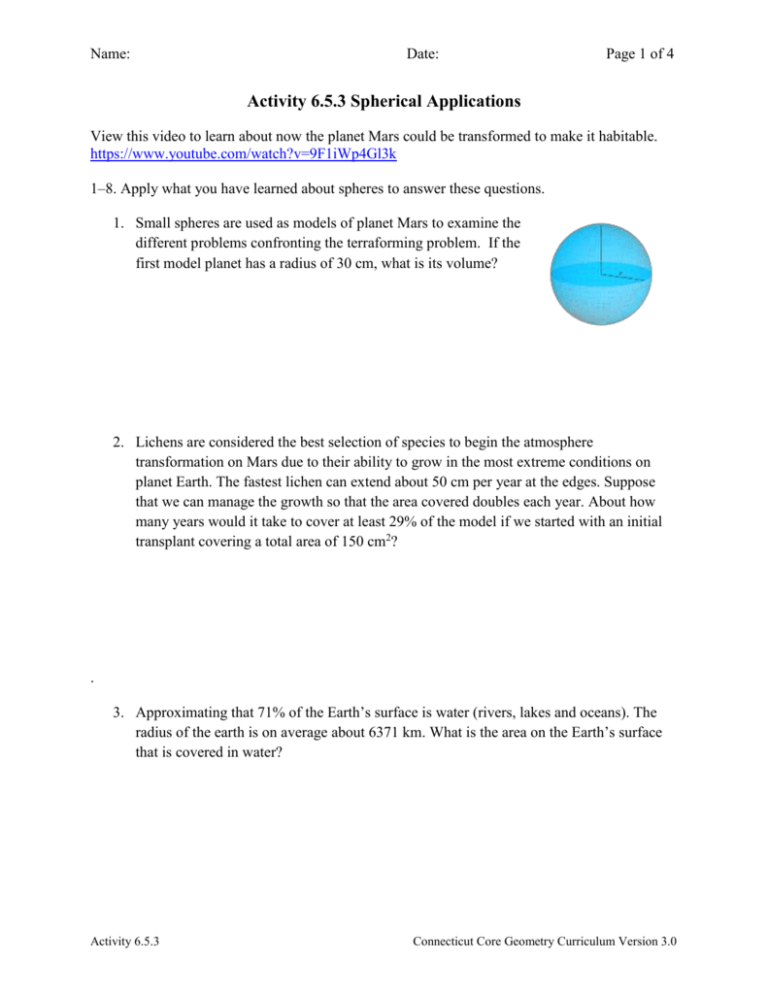
Name: Date: Page 1 of 4 Activity 6.5.3 Spherical Applications View this video to learn about now the planet Mars could be transformed to make it habitable. https://www.youtube.com/watch?v=9F1iWp4Gl3k 1–8. Apply what you have learned about spheres to answer these questions. 1. Small spheres are used as models of planet Mars to examine the different problems confronting the terraforming problem. If the first model planet has a radius of 30 cm, what is its volume? 2. Lichens are considered the best selection of species to begin the atmosphere transformation on Mars due to their ability to grow in the most extreme conditions on planet Earth. The fastest lichen can extend about 50 cm per year at the edges. Suppose that we can manage the growth so that the area covered doubles each year. About how many years would it take to cover at least 29% of the model if we started with an initial transplant covering a total area of 150 cm2? . 3. Approximating that 71% of the Earth’s surface is water (rivers, lakes and oceans). The radius of the earth is on average about 6371 km. What is the area on the Earth’s surface that is covered in water? Activity 6.5.3 Connecticut Core Geometry Curriculum Version 3.0 Name: Date: Page 2 of 4 4. Knowing that the oceans of the world (69 % of earth’s surface) are approximately 3.8 km deep on average, what is the volume of the oceans? 5. If the Earth’s polar ice caps (Antarctica mostly) were to melt completely, the sea level would rise by 68 meters. What would be the volume of all that water? 6. The surface area of the planet Mars is said to be roughly equal to the land area of the all the continents of earth. If the average radius of the planet Mars is 3389 km, does this statement agree with what we calculated in question 3 above? Activity 6.5.3 Connecticut Core Geometry Curriculum Version 3.0 Name: Date: Page 3 of 4 7. The core of Mars would need to be heated for it to develop a magnetosphere. Due to the liquid outer core and the solid inner core, the actual radius of the entire core of Mars is difficult to estimate. The range of values calculated from the latest data collected put the radius at a minimum of 1300 km and a maximum of 1500 km. What would be the minimum and maximum volumes of the entire Martian core given these data estimates? (Answer to the nearest billion km3.) Image from jpl.nasa.gov 8. Again, assuming that we can manage the growth of lichen in such a way as to double the area covered each year, about how many years would it take to cover at least 20% of the surface of Mars starting with an initial transplant covering 100 km2? 9. Soap bubbles have spherical shapes because they minimize the surface area for a given volume. See www.youtube.com/watch?v=iQigGLdSsUo. Suppose a cube has the same volume as a sphere with a radius of 10 cm. a. Find the volume of the cube to the nearest 0.1 cm3. b. Estimate the edge of the cube to the nearest 0.1 cm. c. Find the surface area of the cube. d. Show that the surface area of the cube is greater than the surface area of the sphere. Activity 6.5.3 Connecticut Core Geometry Curriculum Version 3.0 Name: Date: Page 4 of 4 10. According to the International Federation of Football Associations (FIFA), a regulation soccer ball must meet the following requirements: (www.soccerballworld.com) Law 2 - The Ball Qualities and Measurements The ball is: • spherical • Made of leather or other suitable material • Of a circumference of not more than 70 cm (28 ins) and not less than 68 cm (27 ins) • not more than 450 g (16 oz) in weight and not less than 410 g (14 oz) at the start of the match • of a pressure equal to 0.6 – 1.1 atmosphere (600 – 1100 g/cm 2 ) at sea level (8.5 lbs/sq in to 15.6 lbs/sq in) a. Find the minimum and maximum volume and surface area for a soccer ball. Measure in cubic inches and square inches. b. Find the minimum and maximum density (in lb/in3) for a regulation soccer ball. c. Suppose have a ball with maximum surface area inflated to maximum pressure. Find the total force on the surface (measured in lbs.) . Activity 6.5.3 Connecticut Core Geometry Curriculum Version 3.0
